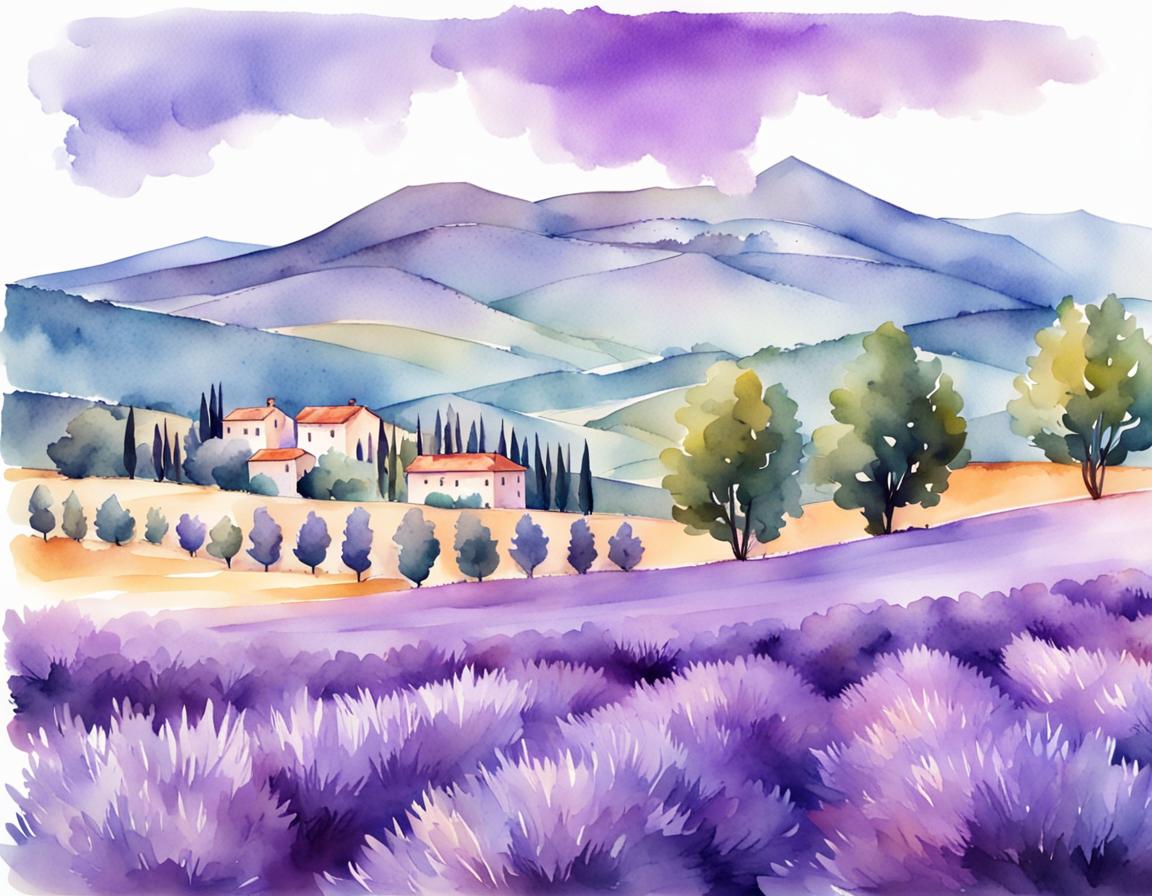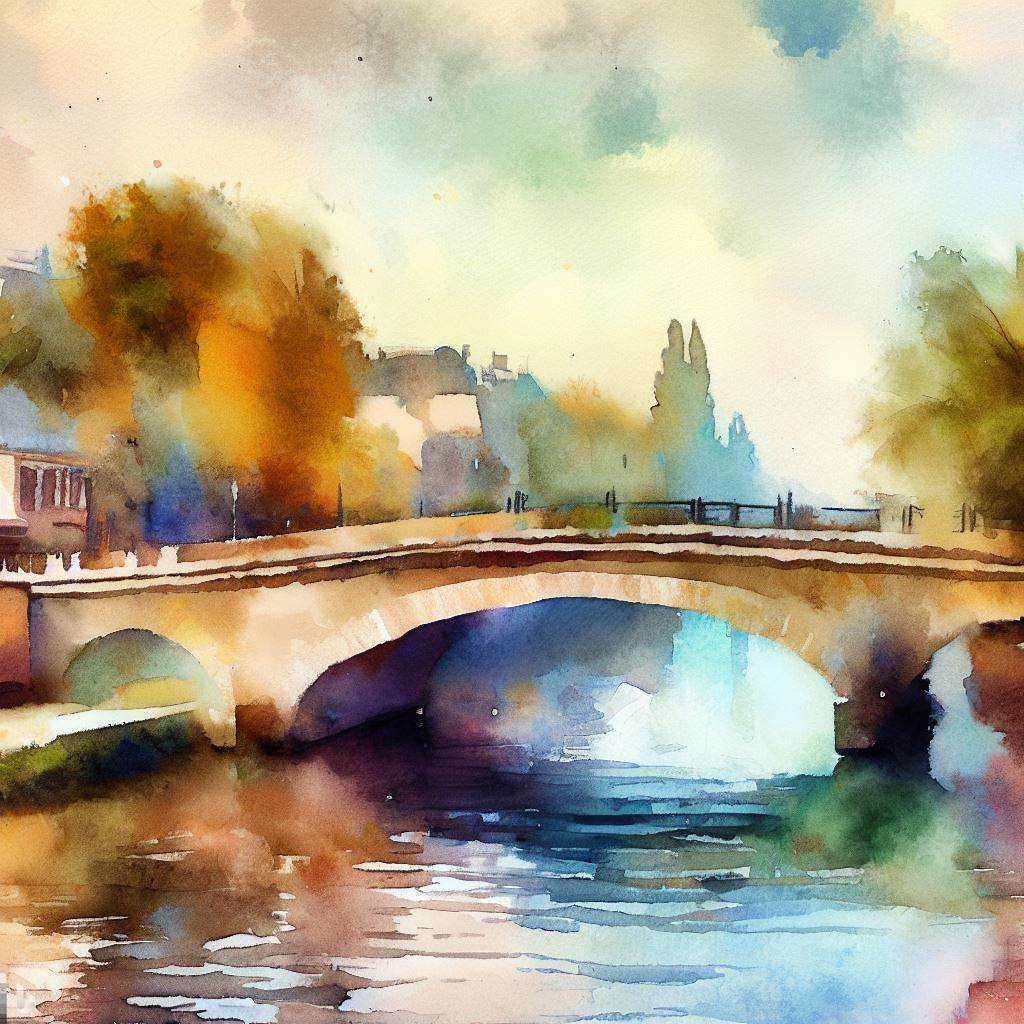
Have you ever gazed at a watercolor painting and wondered how the artist captured those ethereal, fluffy clouds? Do you struggle to make your clouds look realistic rather than like blobs of paint? You’re not alone. Many aspiring artists find watercolor clouds challenging. They often worry about making their skies look natural and cohesive with the rest of the landscape. Let’s dive into the world of watercolor clouds and tackle these concerns head-on.

Reading up on clouds: Cloud Classifications and Characteristics
The Basics of Painting Watercolor Clouds
Painting clouds in watercolor can elevate your landscape scenes, adding depth and atmosphere. The key is to understand the techniques and practice them regularly. Here are some foundational tips:
- Paint from Light to Dark: Start with the lightest areas of the clouds, which will be the white of the paper. This technique is known as negative painting, where you paint around the white areas to define the shape of the clouds
- Avoid Replicating Reference Photos Exactly: Instead of copying a photo, capture the essence and feeling of the clouds. This approach prevents frustration and encourages creativity
- Use Various Brush Strokes: Differentiate your brush marks to keep the sky interesting. Use all sides of your brush to create varied textures
Step-by-Step Guide to Painting Fluffy Clouds
Materials Needed
- Paper: High-quality watercolor paper such as Strathmore 300.
- Brushes: A mix of quill, round, and flat brushes.
- Paints: A palette with a range of colors including blues, grays, and whites.
Process
- Sketch Lightly: Begin by lightly sketching the outline of your clouds. This helps in visualizing the composition.
- First Wash: Apply a light wash of blue for the sky, leaving the cloud areas white. Let it dry completely.
- Add Shadows: Mix a light gray and add shadows to the underside of the clouds. This step gives depth and dimension.
- Build Layers: Gradually add darker shades to enhance the contrast, always allowing each layer to dry before adding the next
- Final Touches: Use a damp brush to soften edges and blend colors, creating a natural look.
Common Mistakes and How to Avoid Them
Hard Edges
Clouds should have soft, feathery edges. Avoid hard lines by using a wet-on-wet technique where you apply paint to wet paper, allowing the colors to blend smoothly.
Overworking the Paper
Watercolor paper can only take so much water and paint before it starts to break down. Be mindful of the amount of water you use and avoid overworking any area.
Lack of Contrast
Clouds need contrast to appear three-dimensional. Ensure you have a range of values from light to dark to create a realistic effect.
Advanced Techniques
Wet-on-Wet

This technique involves applying wet paint onto wet paper, which allows the colors to blend seamlessly. It’s perfect for creating soft, diffused cloud edges.
Lifting
Use a damp brush or tissue to lift paint from the paper, creating highlights and adding texture to your clouds.
Masking Fluid
Masking fluid can be used to preserve white areas of the paper. Apply it to the areas you want to keep white, paint over it, and then remove it once the paint is dry.
Practical Tips for Consistent Results
- Practice Regularly: The more you paint, the better you’ll understand how water and pigment interact.
- Study the Sky: Spend time observing real clouds. Notice how they change with the light and weather conditions.
- Experiment: Don’t be afraid to try different techniques and tools. Each attempt teaches you something new.
Inspiration? Famous Artists Painting Clouds in Watercolors
| Title | Artist | Description | Gallery |
|---|---|---|---|
| Cloud Study | John Constable | Known for his meticulous studies of clouds, Constable’s watercolors capture the intricate details and variations of the sky. | Victoria and Albert Museum, London |
| Clouds, Study of the Sky | John Constable | Another detailed study by Constable, emphasizing the play of light and shadow in cloud formations. | Yale Center for British Art, New Haven |
| Ghost Ranch IV | John Hulsey | Hulsey captures the dramatic transition of clouds during a storm, showcasing his expertise in plein air watercolor techniques. | Private Collection |
| Clouds | Thomas Cole | Cole’s watercolor studies of clouds reflect his deep observation of nature and atmospheric conditions. | The Metropolitan Museum of Art, New York |
| View of Toledo | El Greco | Although primarily known for his oil paintings, El Greco’s watercolors also feature dramatic skies and expressive clouds. | The Metropolitan Museum of Art, New York |
| Sunset across the Hudson Valley | Frederic Edwin Church | Church, a student of Thomas Cole, painted scientifically observed cloud studies, capturing the essence of the Hudson Valley skies. | Cooper-Hewitt, Smithsonian Design Museum, New York |
| Fluffy Clouds | Julia Bausenhardt | Bausenhardt’s watercolors focus on the softness and lightness of clouds, using delicate brushwork and layering techniques. | Online Courses and Private Collections |
| Rainstorm over the Sea | J.M.W. Turner | Turner’s watercolors are renowned for their atmospheric effects, with clouds playing a central role in his compositions. | Tate Britain, London |
| Clouds over the Sea | Winslow Homer | Homer’s watercolors often depict the interplay between sea and sky, with clouds adding drama and movement to his seascapes. | The Art Institute of Chicago |
| Clouds and Skies | Paul Klee | Klee’s abstract approach to clouds in watercolor explores color and form, creating whimsical and thought-provoking compositions. | Zentrum Paul Klee, Bern |
These artists have made significant contributions to the depiction of clouds in watercolor, each bringing their unique style and perspective to the subject. Their works can be found in some of the most prestigious galleries around the world.
Conclusion
Painting watercolor clouds might seem daunting at first, but with practice and the right techniques, you can create stunning skies that enhance your landscapes. Remember to start light, build up your layers, and always keep experimenting. Happy painting!
Suggested Resources
- Learn to Paint Watercolor
- Julia Bausenhardt’s Cloud Painting Course
- Katrina Crouch’s Fluffy White Clouds Tutorial
Table: Essential Supplies
| Item | Recommended Brand | Link |
|---|---|---|
| Paper | Strathmore 300 | Amazon |
| Quill Brush | Silver Black Velvet | Amazon |
| Round Brush (Size 10) | Silver Black Velvet | Amazon |
| Burnt Sienna Paint | Daniel Smith | Amazon |
| Ultramarine Blue Paint | Daniel Smith | Amazon |
cl1Perp


